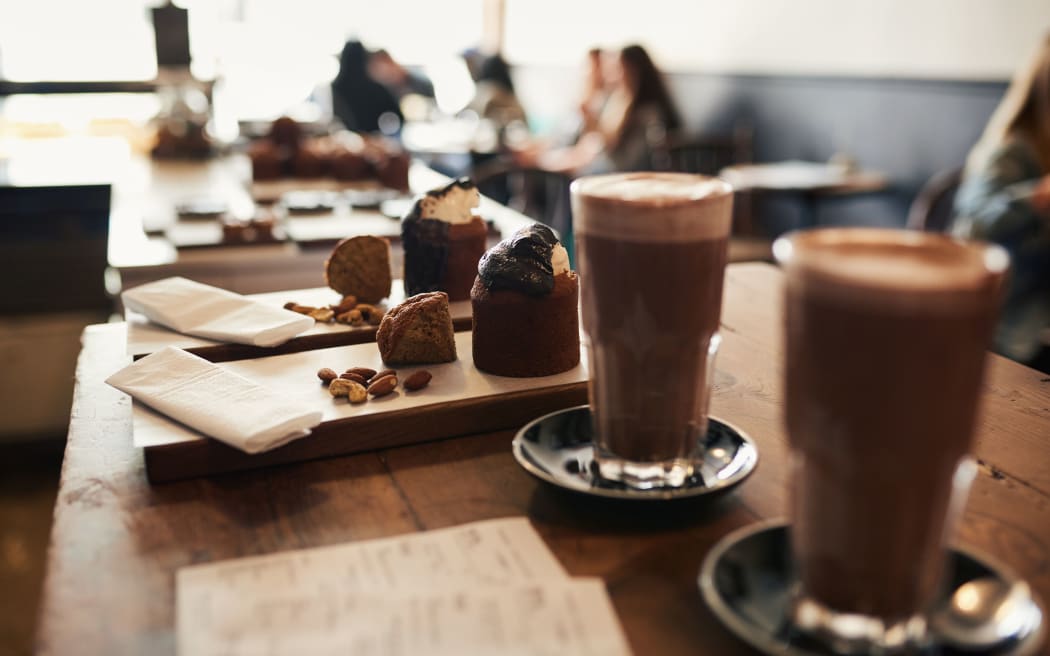There's toing and froing on the benefits of coffee, with a recent study pointing to two or three cups a day has been associated with living longer, a lower risk of heart disease and maybe even a decrease the risk of prostate cancer and men and endometrial cancer in women.
Coffees antioxidants and the flavonoids are even associated with a potential decrease in the risk of developing Parkinson’s Disease, while its anti-obesity compounds may cause body fat to reduce.
New research out of the University of Newcastle has now looked at what type of coffee we should be drinking for health benefits.

Photo: 123RF
Molecular nutritionist Dr Emma Beckett, a senior lecturer in the Food Science and Human Nutrition school at the University of Newcastle, tells Sunday Morning the method of brewing coffee determines what qualities the beverage has.
Instant coffee is different than filtered coffee, and others derived from other methods, and its strength depends on how much you heap into a cup.
“Instant coffee isn't brewing per se, because the instant coffee fully dissolved,” she says.
“So, instant can be quite strong, because you do get that entire dissolution of the instant granules into the water. But you do lose some of the caffeine in the processing.
“So, instant coffee is probably about half the strength of your strongest espresso if you're making it just with one teaspoon, but obviously you can put as much as you like in, so it becomes quite tricky.
The strongest brew in terms of concentration is the espresso.
“Espresso uses really hot water, almost 100 degrees, and it uses pressure. So that hot water and pressure combination forces a lot more of the caffeine out of the beans and into the water,” she says.
The method of extraction determines more than the percentage of caffeine in the coffee too. Extraction technique and efficiency will colour the taste.
“That is something that people might care about these days, because the price of coffee is going up, and so you want to make sure you're getting your bang for buck in the beans.
“Pretty much everything is very similar in terms of efficiency, when you look at the different amount of coffee, we might add the different amount of water, we might add how long we might brew it for.
But, it is really about a lot more than the caffeine and the really interesting thing about coffee is you get these different ‘curves’ of extraction.
“So, the caffeine comes out nice and early because it's water soluble, so it's really easy to get that into a burn. But then all the other things that make the complex tastes and aromas and the experience of coffee.
“The oils that make the crema - they come out much later and have their own sensitivities to temperature and pressure. So that's why you get a slightly different experience with each of these brew methods, because you're getting different proportions of those volatiles coming out.
“Then it gets even more complicated because all of those compounds interact with each other. So, you can't even compare and go here is one specific molecule that has this specific flavour component that's going to make this happen in this kind of brew."
The foam at the top of the coffee is derived from the lipids from oils in the coffee beans. She says you generally get that crema in the methods using high pressure or high temperature needed to extract the oils.
“Whereas you don't typically get a crema on something that uses a lower temperature, like a plunger method or, or a filter method,” she says.
Some people judge a coffee’s taste quality by its bitterness and the experience is very subjective, depending on an individual’s taste receptors.
“There's about 30 different taste receptors for bitter compounds,” she says.
“Each individual has their own genetics that gives them their own version of those receptors. So, all of that complication adds up to be a very different experience.
Judging one type of coffee delivery as healthier than others is tricky because of the complexities involved. Beckett is also wary of claiming general health benefits of ‘drinking coffee’.
“There is some evidence that says the filter methods are healthier than the other methods, and some of that's come from observational studies,” she says.
“So, looking at people who are drinking coffee when they're living well into old age, and some of that's come from looking at the molecular differences in the extraction techniques. It might be a little bit healthier for you because there's some compounds in coffee that are linked to increasing risk of heart disease, increasing the levels of the bad cholesterol, and those molecules more gets left in the beans and more gets bound to the filter when we use the filter methods.
“But for most people, determining what's the healthy cup of coffee probably depends what they're adding to it, whether they're adding that, that cream that sugar, and you know, those flavoured syrups and all the other wonderful things we we create our different coffee beverages with.”

